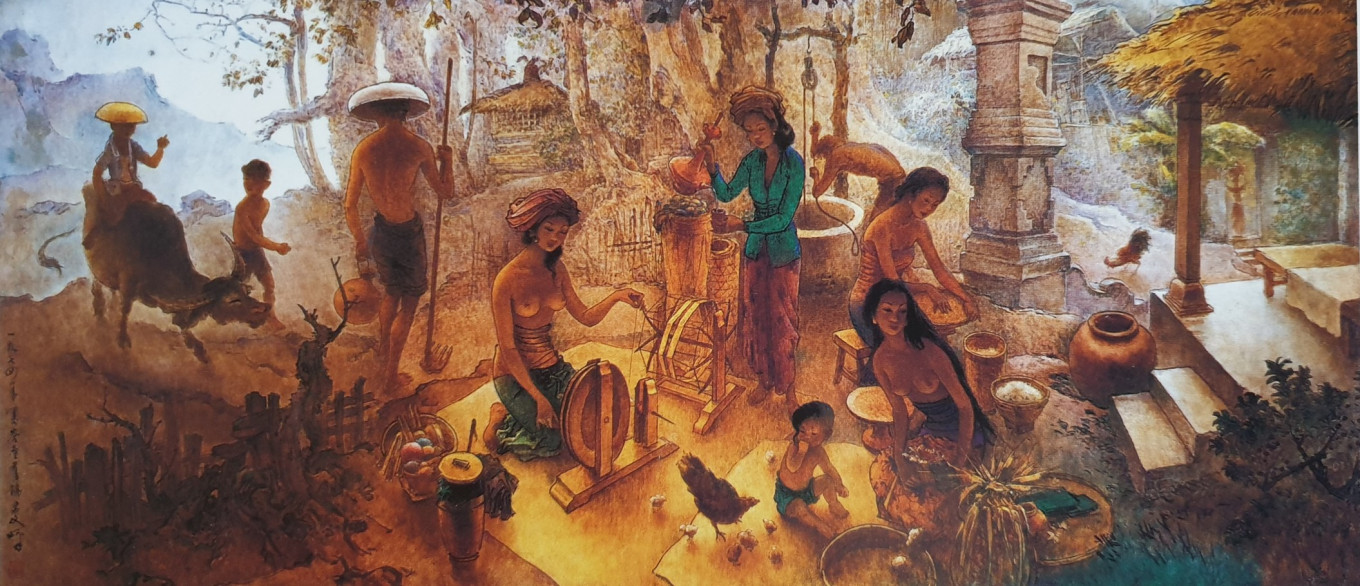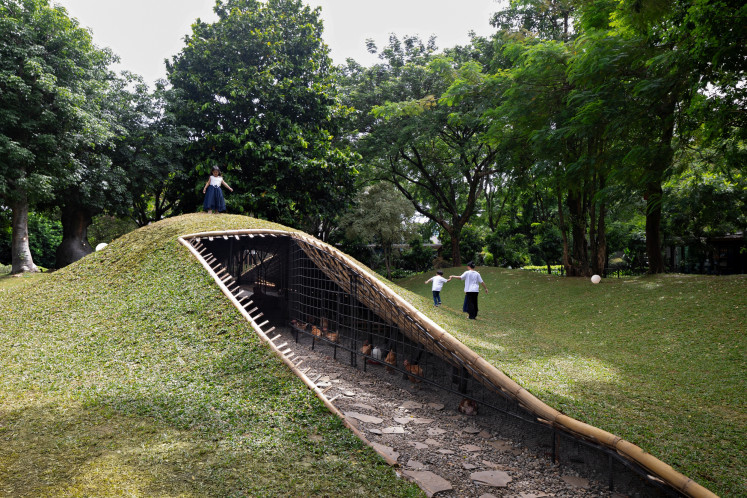Popular Reads
Top Results
Can't find what you're looking for?
View all search resultsPopular Reads
Top Results
Can't find what you're looking for?
View all search resultsArt in a time of crisis: Lee Man Fong's 'Bali Life' invites reflection
Art is a way for us to navigate uncertain times by focusing our minds on the magical, the beautiful and the sublime. In this "Art in a Time of Crisis" series, contributor Richard Horstman shares how art functions to serve society and introduces readers to individual pieces that inspire people to draw strength from the painter's creativity and passion.
Change text size
Gift Premium Articles
to Anyone
W
e are currently witnessing an escalation of human conflict, corruption, greed, neglect, war and global disasters. Art becomes increasingly vital in this modern era, when the apocalypse seems to be at our very doorstep.
Art educates and inspires, and prompts our imagination to assess things and circumstances in a new and alternative light. Art can destroy barriers that divide people and can identify serious issues that we must address, both individually and collectively. It empowers us to see beyond that which may erode our growth and creative core.
Art provides a soothing and welcome respite from our anxieties, and now more than ever, its distinct qualities are valuable to society.
When we engage in art, our attention focuses inward, connecting us to our senses, body, and mind. The creativity and human endeavor within the work – its life force – contains an essence that charges our body, mind and soul, and we become nourished and revitalized. While absorbed within art, the outside world and its demands temporarily fade and are shelved.
The works’ energies reach out to us and capture our imagination with forces that are the most potent essences of our universe: creativity and love. Art communicates that there is much more to the world than the physical can provide.
Bali Life is a serene, timeless snapshot of a distinct traditional culture by Chinese-Indonesian artist Lee Man Fong. The painting resonates with the peace and harmony inherent in Balinese society that touches our hearts and souls. Bali Life points to aspects within the Balinese culture that are worthy of reflection, and is more significant now than ever before.
The painting describes humanity’s close relationship with nature and the divine through cooperation and sustainability. A Balinese shrine and the faint, yet powerfully atmospheric rendering in the top left background link the visible elements of the picture with the omnipotent, unseen realms of Bali, suggesting that there is another vital force alive in our world.
Man Fong’s alluring composition in delicate tones invites us to imagine ourselves as part of this calming scenario and offers a retreat from our current collective malaise. In doing so it prompts us to reflect upon our lifestyle choices and the shortsighted guiding principles of modern culture.
What is occurring now throughout the world is perhaps a timely, natural recalibration, a way for Mother Nature to command our attention so that we can pause to take an in-depth assessment of our actions and question our individual and collective values. In doing so, we may discover that we have become disconnected from the traditional wisdom and the rhythms of nature – the robust, co-creative systems that have enabled our sustainability.
Solutions may be found, however, among the sacred philosophies of Balinese culture. Tri hita kirana, for example, which translates to “three causes/ways to wellbeing”, refers to the principles of living in harmony with God, with other people and with the natural environment.
Born in 1913 in Guangzhou, China, Lee Man Fong started supporting his mother and nine siblings when his father died in 1930, producing advertisements and paintings in Singapore. He moved to Jakarta in 1932, during a period of heightened political tension that stimulated a new direction in nationalism and Indonesian modern art.
In 1946, Man Fong's solo exhibition came to the attention of Indonesia's first president, Sukarno, an art lover and collector. In 1949, Man Fong was awarded the Malino scholarship from the Netherlands lieutenant-governor general and studied in Holland for three years.
He went on to hold successful exhibitions in the Netherlands and in Paris, France, and in 1961 was appointed the presidential painter and curator. Bali Life was created in 1974 and has an enduring essence that pulsates almost tangibly from the canvas to the viewer.
Lee Man Fong died on April 3, 1988, his life and his passion for art an inspirational story of triumph over adversity.











